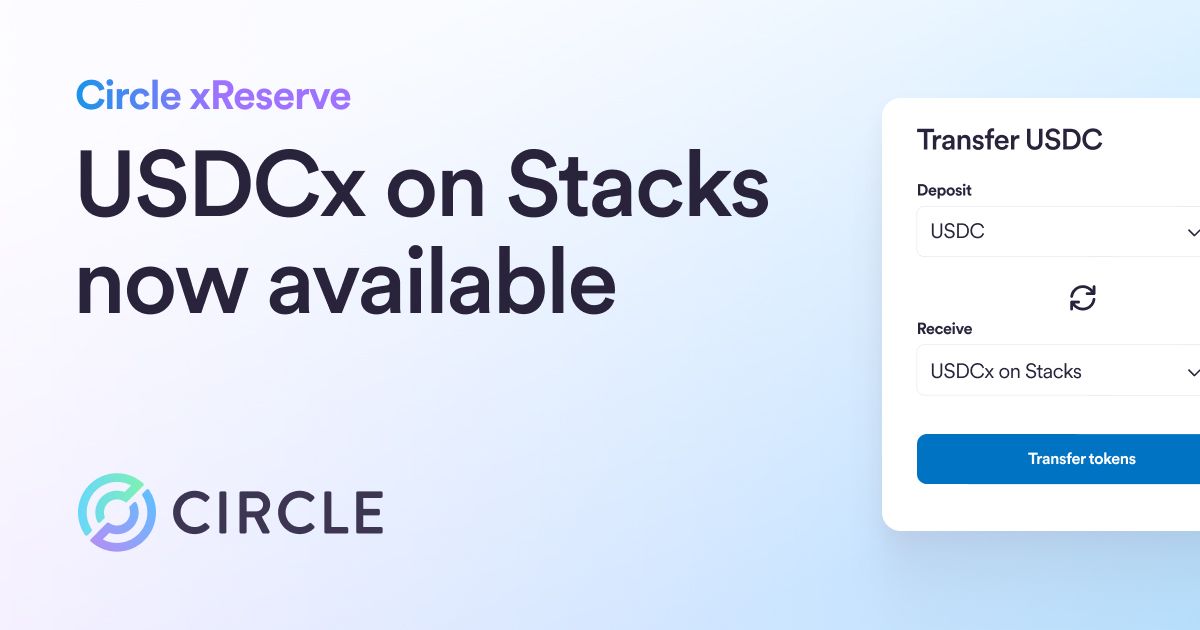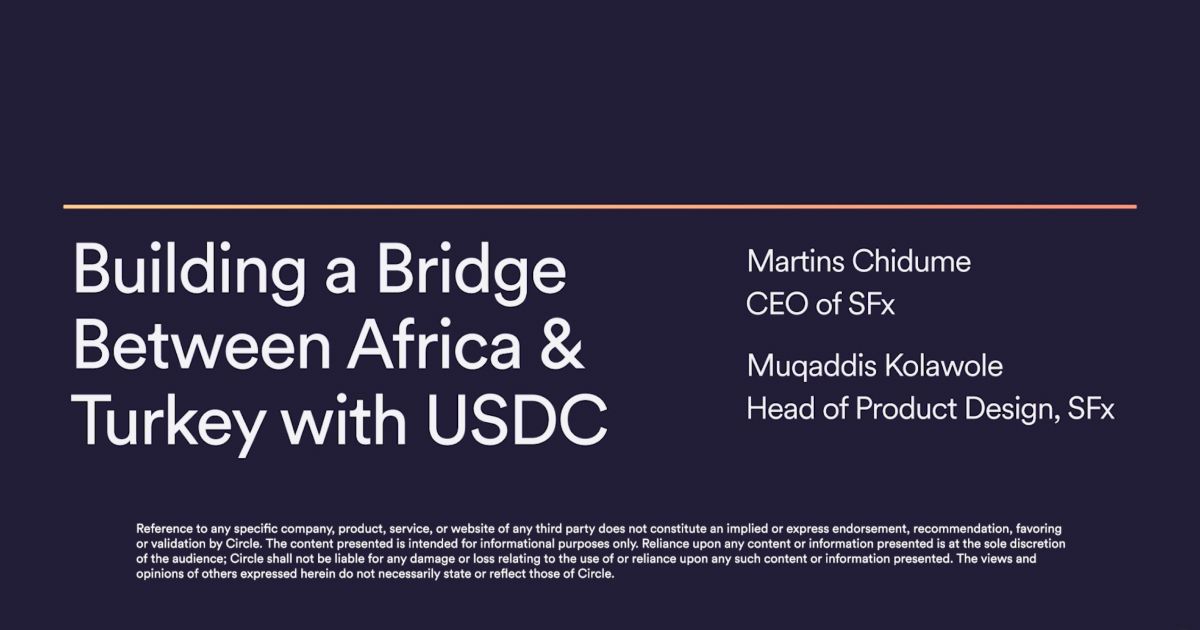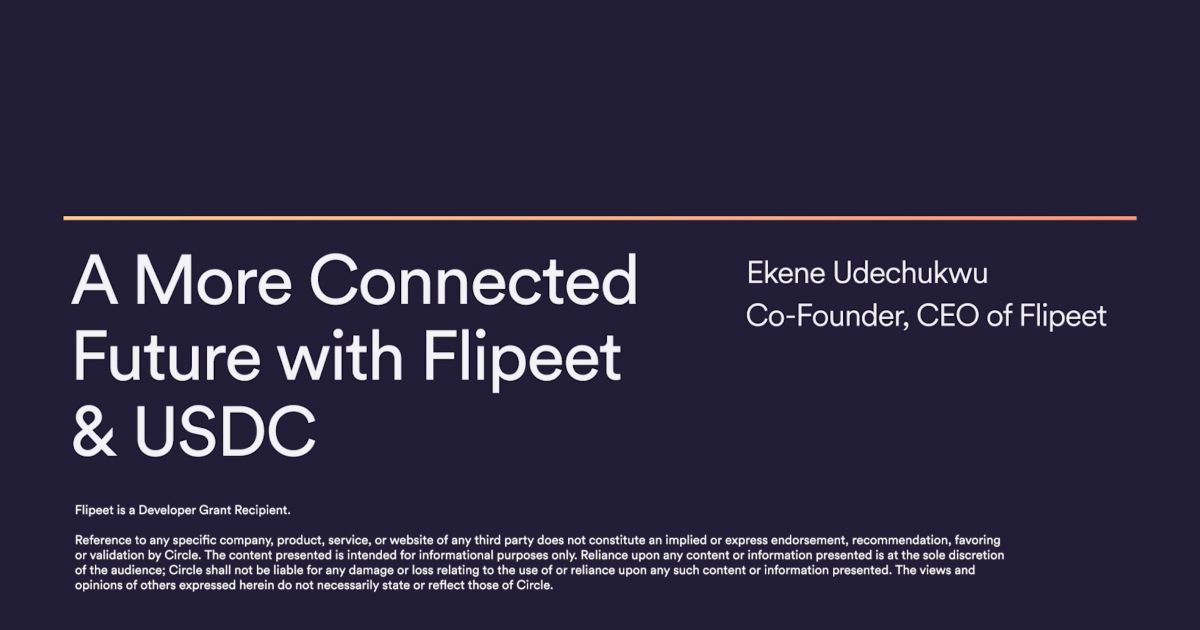Alondra Mendez Torres, a summer intern at Circle, found USDC before she found her internship. USDC changed her financial future and future career path.

Written by: Alondra Mendez Torres
Lessons from my 10-week internship with Circle’s Strategy, Policy & Communications team have been transformative. As I head into my senior year at the University of Rochester, I now have started a conversation to expand financial literacy programs on campus and open new career paths for students interested in the field. I have also decided to explore continuing education and career opportunities in Public Policy.
At 18 years old, I moved from Puerto Rico to New York to pursue a Bachelor's Degree at the University of Rochester. As a fresh high school graduate, I only had a checking account at a local bank from home. During my first weeks in the U.S., I remember that my debit card would be declined a few times due to “security” reasons. There were times when I couldn’t access my money or buy essentials, such as my daily morning coffee, as freely as I did in Puerto Rico. This led me to open a new checking account in New York.
What I thought was a solution created a new problem, as I now had to ask myself: “How would I transfer money between New York and Puerto Rico?” The corporate banks available to consumers in the U.S. mainland don’t operate on the island. Wire transfers were (and still are) extremely expensive. For every transaction, I would lose $15 - $40 to send the money, and $25 to receive the transfer. On top of that, disbursement typically took 3-5 business days.
These costs were a genuine problem for me and became a source of family frustration. My parents continued to pay my cell phone bill – but unlike many other college students, I paid them back, each month. So a $75 cell phone bill became $115.
High processing fees, long wait times, and banking complexity couldn’t be the only options available to me. I began researching different payment apps that were available at the time. I entered my Puerto Rican bank credentials and proceeded to deposit funds into the payment app. I would wait 2-3 days for balances to transfer, cash out into my New York checking account, and lastly, wait another 1-3 days for that cash out transaction to process. Evidently, this wasn’t efficient at all, but in my eyes, I had “broken” the system and saved on wire transfer fees.
Over and over again, for 3 years, I relied on this mechanism to send and receive money between New York and Puerto Rico. The timing of these transactions was at times stressful, but this trick did the job.
Fast-forward to my junior year of college, I was set to study abroad in Spain for a semester. New questions (more like worries) emerged: Would payment apps be secure, or even work internationally, for this trip? How much would a U.S.-based bank charge for foreign transactions or ATM withdrawals abroad? Panic began to set in as I prepared to embark on this new journey.
Unsurprisingly, for any transaction overseas, traditional banks charge 2-5% of the entire purchase. The cost of a foreign ATM withdrawal is generally $5 per transaction. Not to mention, international wire transfers are even more costly into and out of the United States.
During this time, I was already an active crypto investor through Coinbase, a platform that allows users to easily buy, sell and invest in cryptocurrencies. The company had recently launched a VISA debit card that allowed users to make purchases with cryptocurrency. That meant that I could buy groceries, flights, train tickets, clothes, or literally anything with Solana, Ethereum, or just about any digital currency.
But as many people know, the crypto market’s volatility can lead to fluctuations in the value of some cryptocurrencies. Given this reality, I wasn’t sure that I could rely on crypto for payments and transfers. That’s when I found USDC (USD Coin), a stablecoin pegged to the U.S. dollar. Its properties and functions are almost identical to many cryptocurrencies – it runs on blockchain technology and moves at the speed of the internet – but without the volatility.
At this point, my father, who is also familiar with the crypto market, suggested that we convert some of our fiat currency into USDC on Coinbase to exchange money faster between Puerto Rico and Spain. Already in Barcelona, I can still remember that first transaction arriving in seconds. What could look like a simple transaction for some, was for us the end of a 3-year struggle, and seemed like a miracle.
I no longer needed to wait 3-5 business days for the transaction to process at the bank. Once I received the USDC payment, right then and there, the funds were available for use! I no longer resorted to payment apps to transfer personal funds. All transactions were sent directly to my digital wallet, with the ability to use those funds with the VISA debit card connected to my digital wallet.
Thanks to USDC, I lived comfortably in Barcelona for 4 months and traveled to 12 countries in Europe. All while continuing to send money between Spain and Puerto Rico without worry. Neither time difference nor distance mattered with USDC, I could get money into my family’s hands without relying on a bank.
Whether I was in Italy, France, Belgium, Czech Republic, Greece, or Denmark, I paid with USDC everywhere I went regardless of the currency. All without paying foreign transaction fees or fees for ATM withdrawals! As contactless payments are available throughout Europe, I was able to load my card onto my smartphone and didn’t have to carry a physical card in my wallet to pay.
Today, back in upstate New York, I continue to send money home and cover expenses using USDC in my digital wallet . As a USDC holder, I have learned the true meaning of financial freedom. It's not only about earning enough to cover your needs; it's also about being able to move money freely. It's about sending value securely between loved ones without regarding geographical borders and traditional financial systems as impediments.
As I’ve shared my story, it becomes increasingly evident that this is not a problem specific to Puerto Rico. Many other Latin American countries face financial difficulties due to ineffective traditional banking practices as well. It's our responsibility to take the first step to embrace change and move towards economic prosperity and freedom by leveraging financial innovations built on blockchain infrastructure like USDC.
Alondra Mendez Torres completed a 10-week summer internship with Circle’s Strategy, Communications & Policy Organization. She is originally from Puerto Rico and is currently a senior at the University of Rochester studying Marketing with new interests in Public Policy.




